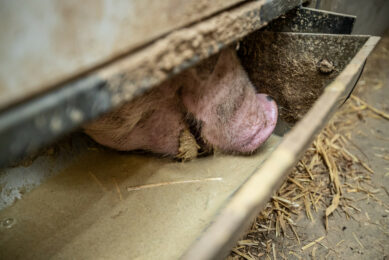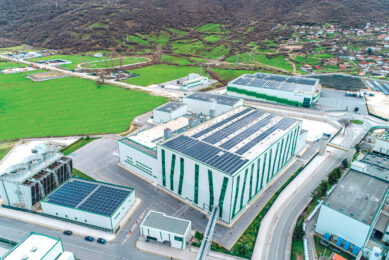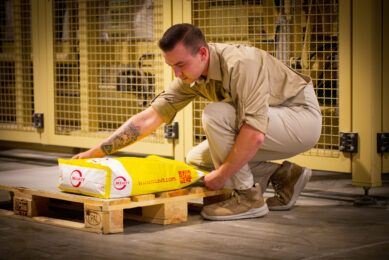Modelling the carbon footprint reduction by vaccination

Porcine circovirus type 2 (PCV2) causes significant losses in global pig production value chain. A review, based on maximum available information from the scientific literature, was conducted to obtain robust statements on the GHGe reduction through prevention of Porcine Circovirus by vaccination.
SUSTAINABILITY & WELFARE SPECIAL 2024 – read all articles
Results based on published studies from 2008 – 2020, demonstrated that an improvement on animal health had a significant impact on reducing greenhouse gas emission (GHGe) by 5%. This corresponds to a saving of more than 1600 kg CO2eq per 100 fattening pigs. On the other hand, only 1.7 kg CO2eq per 100 doses of leading swine vaccines was balanced during a cradle to grave assessment, certified by TÜV Rheinland. This remarkable figure will support the transparency in commercial swine production systems to reduce the so-called Scope 3 carbon emissions of the pig value chain.
Purpose of the study
A growing global population and growing demand on animal protein from developing countries is projected by FAO. The production of pork meat as a valuable protein source is rated as more efficient concerning GHGe than other sources of animal protein. However, with a globally produced amount of 117 million tons of pork meat, measures to further reduce the carbon emission per produced ton of pork meat are required. While feed and manure management are affecting the GHGe of pig production, there is a hidden factor which continuously and significantly influences the GHGe: animal health. It is undisputed that diseases caused by different infectious agents, such as PRRS, PCV2 or Mycoplasma hyopneumoniae, as well as diarrhoeal pathogens, lead to significant reductions in performance and animal losses which ultimately worsen the carbon footprint of pig production systems. The study aims at demonstrating the GHGe reduction impact through properly vaccinated pigs with Ingelvac CircoFLEX/FLEXcombo to avoid diseases caused by PCV2 or combinations between PCV2 and Mycoplasma hyopneumoniae.
Scope 3 emission of the pig production value chain
The pig production value chain is working intensively to reduce GHGe. There is an evolving request from various stakeholder (i. e finance sector, government, and food traders) to disclose climate emissions along the pig production value chain. Globally, companies in the pig industry gear up the quality of the ESG reporting within their public sustainability reporting.
The accounting of Scope 1 (direct emission) and Scope 2 (indirect purchased energy) is a relatively easy task, as this is managed by the business itself. Scope 3 accounting is more complex as these emissions occur up- and downstream in the pig value chain commonly representing 60-90% of the company’s total carbon footprint. Influencing and accounting the Scope 3 emission, requires a high degree of cooperation with business partners along the chain. Managing the Scope 3 emissions is particularly important for companies that are validated by the Science Based Target Initiative (SBTi) to reduce their GHGe and aim to achieve carbon neutrality.
Decarbonisation impact of pig vaccination
A full life cycle assessment of GHGe on pig vaccination considers the entire value chain: GHGe quantification to produce the vaccine at the pharmaceutical plant, distribute the vaccine to the pig farm, as well as the recycling and end of use of the packaging. On the other hand, also calculate the potential saving in GHGe due to higher animal performance levels by preventing severe disease outbreaks.
Results
- Carbon footprint to produce and distribute a market leading swine vaccine
This evaluation, performed according to ISO 14040/14044, analysed the environmental impact as a cradle-to-grave study for Boehringer Ingelheim´s swine vaccine FLEXcombo. As Boehringer is committed to achieve carbon neutrality by 2030, many efforts to reduce GHGe are already set in place. Driven by usage of renewable energy during production, efficient distribution channels and partly already implemented recycling opportunities for packaging at end of use, a minor carbon input of 1.7 kg CO2-eq per 100 doses of FLEXcombo was assessed and certified by TÜV Rheinland.
- Carbon saving impact through disease prevention
A sound literature investigation was performed. A total of 17 published studies from 2008 – 2020 fulfilled the requirements: Groups of non-vaccination compared to either Ingelvac CircoFlex or FlexCombo vaccinated groups. Average Daily Gain (ADG) ), Feed Conversion Ratio (FCR) and mortality where measured. The carbon footprint was calculated by using the publicly accessible software application “LfL Climate Check Agriculture” of the Bavarian State Office for Agriculture, developed on the basis of the Intragovernmental Panel of Climate Change, IPCC 2021. Results from the literature demonstrated prevention of animal diseases not only improved performance indicators but also the impact on greenhouse gas emission (GHGe) by 5%. The improved health status of vaccinating pigs resulted in more efficient output of edible animal protein. Compared to non-vaccinated groups, a GHGe reduction of more than 1.600 kg CO2-eq per 100 fattening pigs were calculated for the vaccinated groups.
Protection = savings
To further enhance reporting and validation of GHGe reduction in the pig production value chain, the impact of animal health measures on resource savings like ADG, FCR, and mortality need to be further investigated. Due to specifics in the experimental design of the provided literature data set ( i.e. variation in epidemiology, genetics, and various environmental factors across these studies), there is a need to discuss how the calculated results can be transferred or interpreted to commercial pig production systems. Nevertheless, the investigation provides a first baseline on the impact of properly protected pigs regarding the savings on carbon emission.






